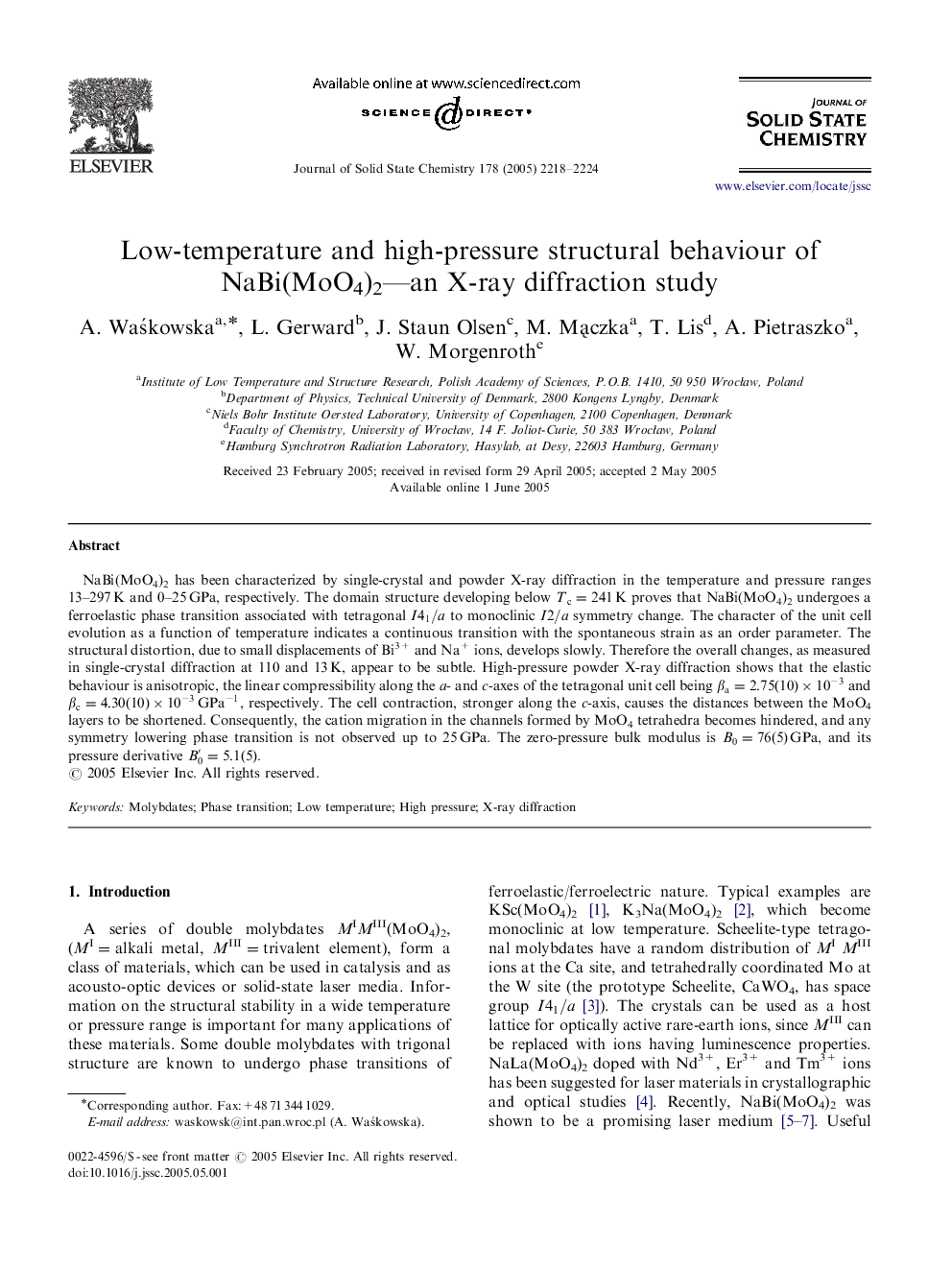| Article ID | Journal | Published Year | Pages | File Type |
|---|---|---|---|---|
| 1333670 | Journal of Solid State Chemistry | 2005 | 7 Pages |
NaBi(MoO4)2 has been characterized by single-crystal and powder X-ray diffraction in the temperature and pressure ranges 13–297 K and 0–25 GPa, respectively. The domain structure developing below Tc=241K proves that NaBi(MoO4)2 undergoes a ferroelastic phase transition associated with tetragonal I41/aI41/a to monoclinic I2/aI2/a symmetry change. The character of the unit cell evolution as a function of temperature indicates a continuous transition with the spontaneous strain as an order parameter. The structural distortion, due to small displacements of Bi3+ and Na+ ions, develops slowly. Therefore the overall changes, as measured in single-crystal diffraction at 110 and 13 K, appear to be subtle. High-pressure powder X-ray diffraction shows that the elastic behaviour is anisotropic, the linear compressibility along the a- and c -axes of the tetragonal unit cell being βa=2.75(10)×10–3βa=2.75(10)×10–3 and βc=4.30(10)×10–3GPa–1, respectively. The cell contraction, stronger along the c-axis, causes the distances between the MoO4 layers to be shortened. Consequently, the cation migration in the channels formed by MoO4 tetrahedra becomes hindered, and any symmetry lowering phase transition is not observed up to 25 GPa. The zero-pressure bulk modulus is B0=76(5)GPa, and its pressure derivative B0′=5.1(5).
Graphical abstractLow-temperature structure of NaBi(MoO4)2.Figure optionsDownload full-size imageDownload as PowerPoint slide
